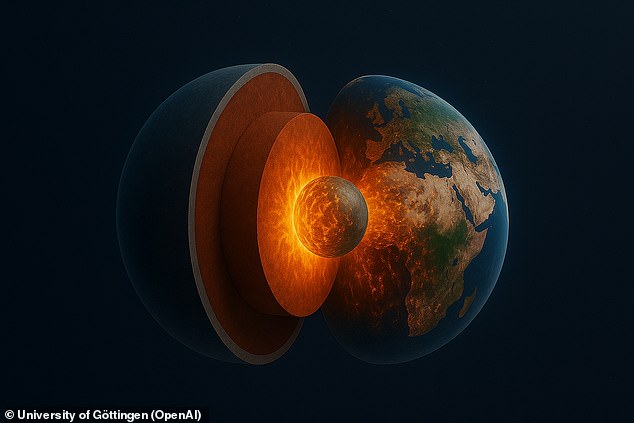
"Earth’s Core Harbors Massive Gold Reservoir Seeping to the Surface"
Earth’s Core Is Leaking Gold and Precious Metals Toward the Surface, Study Reveals
By Xantha Leatham, Executive Science Editor
While Fort Knox holds vast gold reserves, Earth’s core contains 99.999% of the planet’s precious metals, far beyond human reach. New research suggests this gold is slowly migrating toward the surface through geological processes.
Scientists from the University of Göttingen analyzed volcanic rocks from Hawaii and discovered traces of ruthenium (Ru), a rare metal, with an isotopic signature matching Earth’s core. These findings, published in Nature, reveal that the core is “leaking” material into the mantle above, carrying gold, platinum, and other precious metals.
How the Discovery Unfolded
The team used advanced techniques to detect ¹⁰⁰Ru isotopes in Hawaiian lava. This isotope is more abundant in Earth’s core than in the mantle, suggesting core material is rising through mantle plumes — massive flows of superheated rock.
“When the first results came in, we realized we’d struck gold!” said Dr. Nils Messling, co-author of the study. The tiny isotopic differences, previously undetectable, confirm core material is reaching the surface.

Earth’s core-mantle boundary is leaking precious metals like gold. (Image: University of Göttingen)
From Core to Crust
Earth’s metallic core formed 4.5 billion years ago, trapping gold and other heavy elements. Over time, mantle plumes transport this material upward, with some eventually erupting via volcanoes. “Hundreds of quadrillion tonnes of mantle material rise to form islands like Hawaii,” said Professor Matthias Willbold, co-author of the study.
While most gold remains inaccessible, the study highlights that trace amounts journey toward the surface, challenging assumptions about Earth’s geochemical cycles.
A Cosmic Connection
Surprisingly, much of Earth’s surface gold arrived via meteor bombardments after the planet’s formation. However, this new research suggests some may originate from deep within. Metals like palladium and rhodium may also be seeping from the core.

Hawaiian lava samples revealed isotopic clues of core material. (Image: University of Göttingen)
Why We Can’t Mine Core Gold
Despite the findings, retrieving gold from the core (located 1,800 miles deep) remains impossible with current technology. The leakage is gradual, and mantle plumes take millions of years to reach the surface.
Fort Knox vs. Earth’s Core
Fort Knox stores about 147 million ounces of gold, but Earth’s core holds quadrillions of tonnes. However, the core’s metals are trapped under extreme heat and pressure, with only minuscule amounts escaping.

Fort Knox holds just a fraction of Earth’s total gold reserves. (Image: Getty)
Implications for Planetary Science
This discovery reshapes understanding of Earth’s formation. The “late veneer” theory posits that asteroids delivered surface metals, but core leakage suggests an additional source. Computer models now indicate a massive collision 4.45 billion years ago may have mixed core and mantle materials, redistributing metals.
While the core’s role in Earth’s metal inventory is small compared to meteor contributions, the study highlights dynamic processes connecting the planet’s deepest layers to its surface.
Read the full study in Nature here.
Images and captions sourced from the University of Göttingen, Getty, and the U.S. Bullion Depository.


